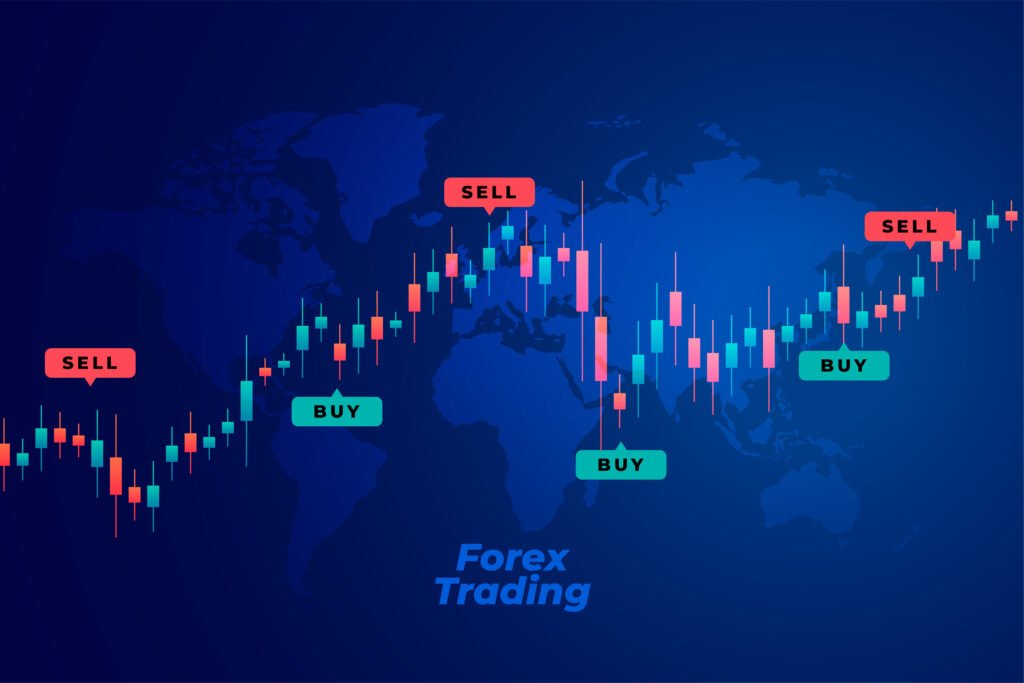What can you trade? (Forex, stocks, commodities, indices, metals)

What assets and markets can you trade? We offer access to over 1200+ financial assets and markets for trading. These include: Shares Indices Forex Metals Commodities Whatever instrument you trade, the ultimate intended outcome is always the same: to make a profit. You’ll make a profit if your speculation about the market’s movement is correct. But if the market moves against your position, you’ll make a loss.
Why do people trade in financial markets?

Suppose that one day you decide to store all of your savings under the mattress. It would not have grown if you had forgotten about the money and left it alone for a year. The amount of money that you first placed there would be precisely the same. In fact, in real terms, it would probably be worth less than when you put it there, because the cost of living is likely to have risen in the interim. Imagine now that you had purchased commodities or shares, or other financial assets, with that money instead. Your money would have a far higher chance of growing rather than being ineffective, as the value of those shares or commodities might increase. However, there is always a chance that their value could also decline. Trading the financial markets is all about balancing that risk with the potential reward and picking assets likely to move in your favor. As we will see, the benefits of doing this carefully and wisely may well exceed the costs of just leaving your money in a bank account (or under the mattress). Trader vs. investor, which one are you? What we’ve described is ‘investing,’ which is essentially a long-term form of financial trading that involves buying and holding financial assets over a number of months or years. It’s quite likely that you’re already investing in the financial markets in some capacity possibly only passively. If you have a pension plan, for example, you’re investing the money you’re earning now with the expectation that it’ll grow and be worth more when you retire. Pension firms generally invest this money in return for a management fee. In most cases, however, you can have a say in which financial instruments you put your money into. And as the chart below shows, a few simple decisions now could have a dramatic effect on the future. Looking at the chart, you can see that £100 saved in cash in 1986 would be worth just £38 in 2014 due to inflation. If you’d invested that £100 in the UK stock market, you could have received a return of around £1120. But long-term investing isn’t the only way of participating in the financial markets; there’s also active trading. While investors generally focus on the long-term value of assets and attempt to build a portfolio that will perform well in the future, active traders tend to focus on short-term market movements, with some participants placing hundreds of trades per day. Whether you choose to focus on the long term, making only a few trades per year, or whether you believe that every tiny movement in price represents an opportunity is entirely down to you, your personality, and how much time you can devote to trading. We look at this topic in detail in the ‘Risk Management & Trading Strategy’ course, but for now, it’s important to note that there are many ways to trade and many different types of traders. And whatever your interests, skills, or priorities, there’s always a form of trading that will suit you. One of the main differences between traders is the type of asset that they trade, and that’s what we’re going to start looking at in the next lesson… Lesson summary Financial trading provides the potential for your money to grow, but there’s always the risk that you can lose money as well Investing focuses on the long-term value of assets Active trading focuses on shorter-term movements in price
Introduction to financial trading

Introduction Financial trading may seem difficult initially. With terms such as CFDs, commodities, accounts, and copy trading, alongside complex concepts like the Dow Jones, bid/ask prices, and leverage, it’s easy to become confused by the terminology. However, the reality is that trading simply involves predicting whether a price will rise or fall. If you predict correctly, there’s a chance for significant gains. If you’re incorrect, the losses can be equally substantial. This is why gaining knowledge is essential before making your initial trade. That is what our Trading Academy will help with. Our goal is to take you through the financial markets from beginning to end. Being more knowledgeable will make you more self-assured and ready, as well as less prone to making expensive mistakes. Let us discuss: What, where, and how to trade with indices, commodities, and forex How to identify trading opportunities Professionals’ methods for managing risk Proven strategies for generating steady, sustained profits And it is just the beginning. Before we examine the tools, platforms, and tactics, let us state the most crucial question: What is financial trading? What is financial trading? Buying and selling financial products to make a profit is the fundamental activity of financial trading. These instruments can take many different forms, and some of the asset classes that are traded the most frequently are as follows: Shares: Units of ownership in companies like Apple, Google, or HSBC. Share trading allows investors to benefit from price movements and dividends. Indices: These track the performance of a group of companies, represented by benchmarks like the FTSE 100, S&P 500, or Nikkei 225. Forex (Foreign Exchange): Trading global currencies such as the euro, US dollar, and British pound. Forex is the largest and most liquid market in the world. Commodities: Physical goods like gold, oil, and corn. Supply and demand, global events, and seasonal patterns influence commodity trading. The majority of traders enter these markets to profit from price swings. However, some people and companies do so for more pragmatic reasons, such as buying raw materials for manufacturing or exchanging currencies for travel. The underlying asset is not necessarily something they wish to own. Rather, they use tools like leverage, CFDs (Contract for Differences), and other instruments provided by online trading platforms to buy low and sell high (or sell high and purchase low). What are financial markets? Financial markets are online or offline marketplaces where buyers and sellers exchange financial products, including stocks, commodities, currencies, and more. Financial markets are there to enable safe, effective, and rapid transactions between participants, just like traditional markets for goods and services. Some financial markets are physical venues, like The London Stock Exchange (LSE): where investors buy and sell shares The Chicago Mercantile Exchange (CME): a major hub for commodity trading Others are fully electronic, such as The NASDAQ: one of the world’s leading stock exchanges for tech shares The Forex market: a decentralized global market for currency trading, powered by banks, brokers, and financial institutions These markets operate under strict regulations to ensure transparency, fairness, and protection against fraud. For instance, when trading commodities like cotton on a regulated exchange, buyers can trust that the product meets quality standards without needing to inspect it firsthand. Lesson summary Financial trading involves buying and selling assets like shares, indices, forex, and commodities Most traders aim to profit from price movements, not own the asset Financial markets connect buyers and sellers either physically or electronically These markets are regulated to improve efficiency, reduce risk, and keep transaction costs low
